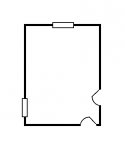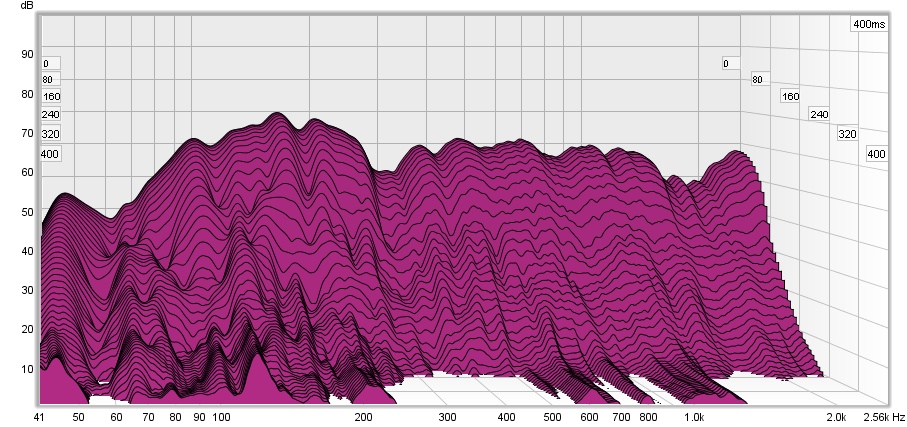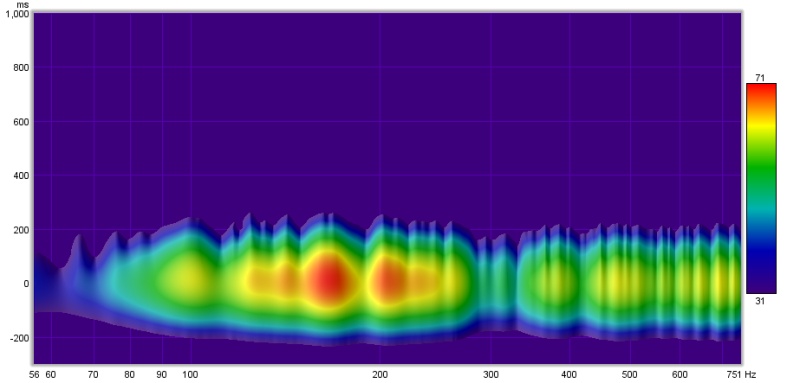Rick Finsta
New member
I'm putting together a small home studio, 99% of the recording/mixing here will be acoustic guitar and vocals. I have already sourced the Owens Corning 703 and will be building 6" thick bass traps for some of the corners. I can only populate two of the floor-to-ceiling corners due to a window and doorway very close to one end of the room. I am also planning on using the 703 material to make broadband absorbers at reflection points for the listening position, and I *might* add diffusers if anyone thinks I may benefit (from a recording or listening standpoint). I am planning on making 2" thick panels that fit into the windows, and hanging some mass loaded vinyl in front of that to try and kill some of the noise going in and out, but realistically I am not expecting a ton of attenuation, I just want to try and take care of some transients from time to time (and I also will be using cardioid pattern mics for starters). I have considered making mass loaded vinyl traps that are mobile that I could simply place in front of the windows when I'm recording or mixing (since I also use my DAW PC for gaming and general use).
The room is 10.92' wide x 12.92' long x 8.25' tall, which actually turns out to be a pretty good ratio for the room modes from what I can tell.
I was also considering putting up a 4'x8' 12 gauge steel plate glued to open cell foam on the one wall where I can't put bass traps due to the door and window. I can't remember the term for these but they reportedly work very well for broadband absorption.
Using the diagram below for reference, I am planning on putting floor-to-ceiling 24" wide bass traps in the upper two corners, and then putting one 24" x 48" trap into the wall/ceiling junction at the upper end, and two 24"x48" units on the wall to ceiling junction at the lower end. The lower end door is the room entrance, and the door on the right wall is to a closet.
I am planning on putting my mixing desk at the top or bottom - since I can't put bass traps in the corners at the bottom, is this a bad choice? Am I pigeon-holed into using the top area for my desk and listening location?
I welcome answers and any other thoughts - my background is in writing, playing, performing, and live sound mixing, not in acoustics and recording!
Thanks in advance.

The room is 10.92' wide x 12.92' long x 8.25' tall, which actually turns out to be a pretty good ratio for the room modes from what I can tell.
I was also considering putting up a 4'x8' 12 gauge steel plate glued to open cell foam on the one wall where I can't put bass traps due to the door and window. I can't remember the term for these but they reportedly work very well for broadband absorption.
Using the diagram below for reference, I am planning on putting floor-to-ceiling 24" wide bass traps in the upper two corners, and then putting one 24" x 48" trap into the wall/ceiling junction at the upper end, and two 24"x48" units on the wall to ceiling junction at the lower end. The lower end door is the room entrance, and the door on the right wall is to a closet.
I am planning on putting my mixing desk at the top or bottom - since I can't put bass traps in the corners at the bottom, is this a bad choice? Am I pigeon-holed into using the top area for my desk and listening location?
I welcome answers and any other thoughts - my background is in writing, playing, performing, and live sound mixing, not in acoustics and recording!
Thanks in advance.






